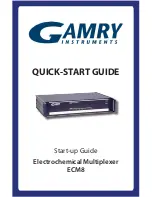
14.02-27
RTDs.
(1)
Avoid locating the RTD where it will be in a direct flame.
(2)
Locate it where the average temperature will be measured. It should be representative of the mass.
(3)
Immerse the RTD far enough so that the measuring point is entirely in the temperature to be measured; nine to ten
times the diameter of the protection tube is recommended. Heat that is conducted away from the measuring point
causes an error in reading.
Thermocouple Extension Wire.
(1)
Use the correct thermocouple extension or compensation cable. i.e. Thermocouple type, insulation type, correct
colour coding.
(2)
It is recommended to install extension or compensation cable in a grounded conduit by themselves, or use overall
screened cable with the screen earthed at one end only. Never run electrical wires in the same conduit.
(3)
All wires that must be spliced should be soldered, or a proper thermocouple termination block used.
(4)
Lightning arrestors should be used if there is a chance from this source.
Thermocouples.
(1)
Avoid locating the thermocouple where it will be in a direct flame.
(2)
Never insert a porcelain or refactory tube suddenly in a hot area. Pre-heat gradually while installing.
(3)
Locate it where the average temperature will be measured. It should be representative of the mass. If necessaryuse
several thermocouples to obtain the average temperature.
(4)
Immerse the thermocouple far enough so that the measuring junction is entirely in the temperature to be measured:
nine to ten times the diameter of the protection tube is recommended. Heat conducted away from the junction causes
an error in reading.
5)
If the thermocouple is mounted horizontally and the temperature is above the softening point of the tube, a support
should be provided to prevent the tube sagging. Otherwise install the tube vertically.
(6)
Keep the junction head and cold junction in the approximation of the ambient temperature. Especially in the Noble
Metal Class.
(7)
On open circuit thermocouples (T/C) floats to ambient ±10C typical. For upscale or downscale drive resistors must
be fitted externally. Refer to ‘2100-A16 Input Connection Diagram Thermocouple Upscale (US) / Downscale (DS)
Drive.’ If ground loops or excessive noise are present on the T/C inputs, or between T/C and other inputs, the readings
may not be accurate, and an open circuit T/C may not drive as expected. In these situations an isolating transmitter
must be used.
2100-A
16
Commissioning.
(1)
Check that the 2100-A
16
has been set up to the right input ranges, and that it’s new ranges have been checked.
(2)
Once the above conditions have been met, and the wiring checked, apply power to the 2100-A
16
, the loops,
sensors, 2100-Rs and 2100-Ms. Allow a 5 minute warm-up period - longer for thermocouples - refer to Input
Connection Diagram for Thermocouple Inputs, Note 3 & 4.
Note 1. There is a 15sec initialisation period when the 2100-A
16
is powered up, before it will communicate.
Note 2. For maximum accuracy allow a 6 hour warm up period.
Note 3. If T/C upscale or downscale drive resistors have been fitted, check that each channel drives to the
desired level on open circuit.
(3)
For Clock/Reset Channel Selection:
Check that the red LEDs on the 2100-A
16
and 2100-M are flashing. The LED next to the Clock terminal (62)
should flash 16 times faster than the LED next to the Reset terminal (61). For each Clock or Reset pulse received
the respective LED on the 2100-A
16
and 2100-M will go from OFF to ON to OFF. If a Clock or Reset line is held high,
the respective LED will remain ON. If a Clock or Reset line is held low, the respective LED will remain OFF.
(4)
Take a reading of the value being measured on each channel, and ensure that this agrees with the level being
indicated by the Data Logger or PLC, for that channel. Adjust for any differences in the software of the system.
(5)
Ethernet Only; The GREEN and ORANGE LEDS of the Ethernet port light up according to the devices operation.
Refer to “Description of Ethernet LED Functions.” Refer to Ethernet 10/100 section, page 23, for more details.
(6)
RTD Inputs only; A small error can occur due to differences in cable resistance in the RTD legs, and errors
in the RTD itself. (Usually less than 0.5C). To check the variable being measured use a calibration standard RTD at
the same immersion depth. If the Zero error is large, the readings are fluctuating or a Zero error has suddenly
appeared after the 2100-A
16
has been operating for some time, there could be an earth loop between two or more
RTD sensors on the 2100-A
16
(or between 2100-Ms if connected). Disconnect each RTD sensor individually from
the 2100-A
16
, and ‘Megger’ the RTD by shorting all three wires together and testing from this point to earth. If a path
to earth is found repair or replace the faulty RTD sensor or probe.
Warning
: Do not ‘Megger’ RTDs while connected to the 2100-A
16
. Damage to the 2100-A
16
or 2100-M will result.
(7)
Thermocouple Inputs Only; Due to the limits of error in a standard thermocouple probe, and standard extension
wire and compensating wire, an error can occur. For example in a type K thermocouple installation an error of 2.2C
or 0.75% FSO can occur (whichever is greater). To check the temperature being measured use a calibration
standard thermocouple at the same immersion depth.


































